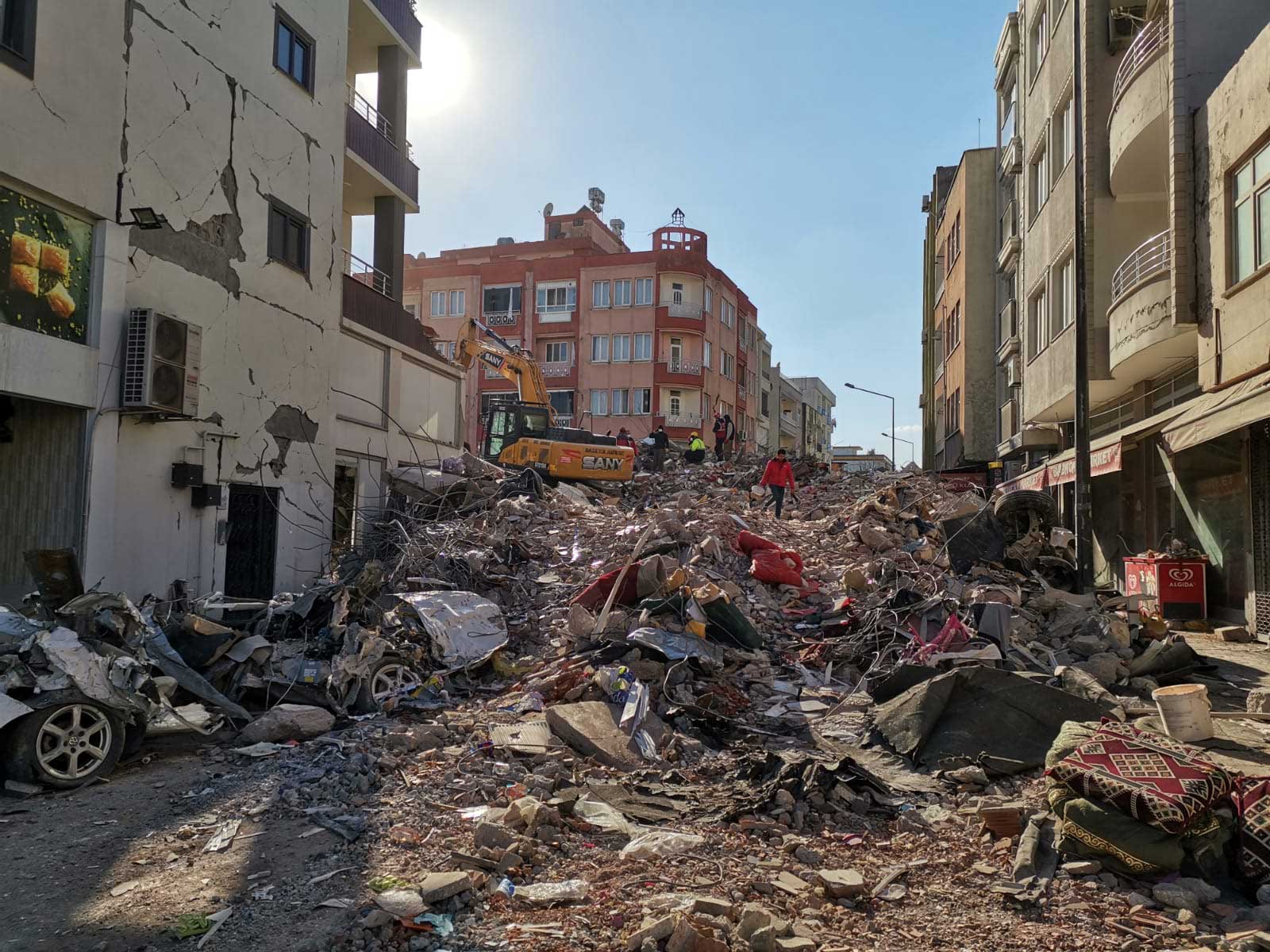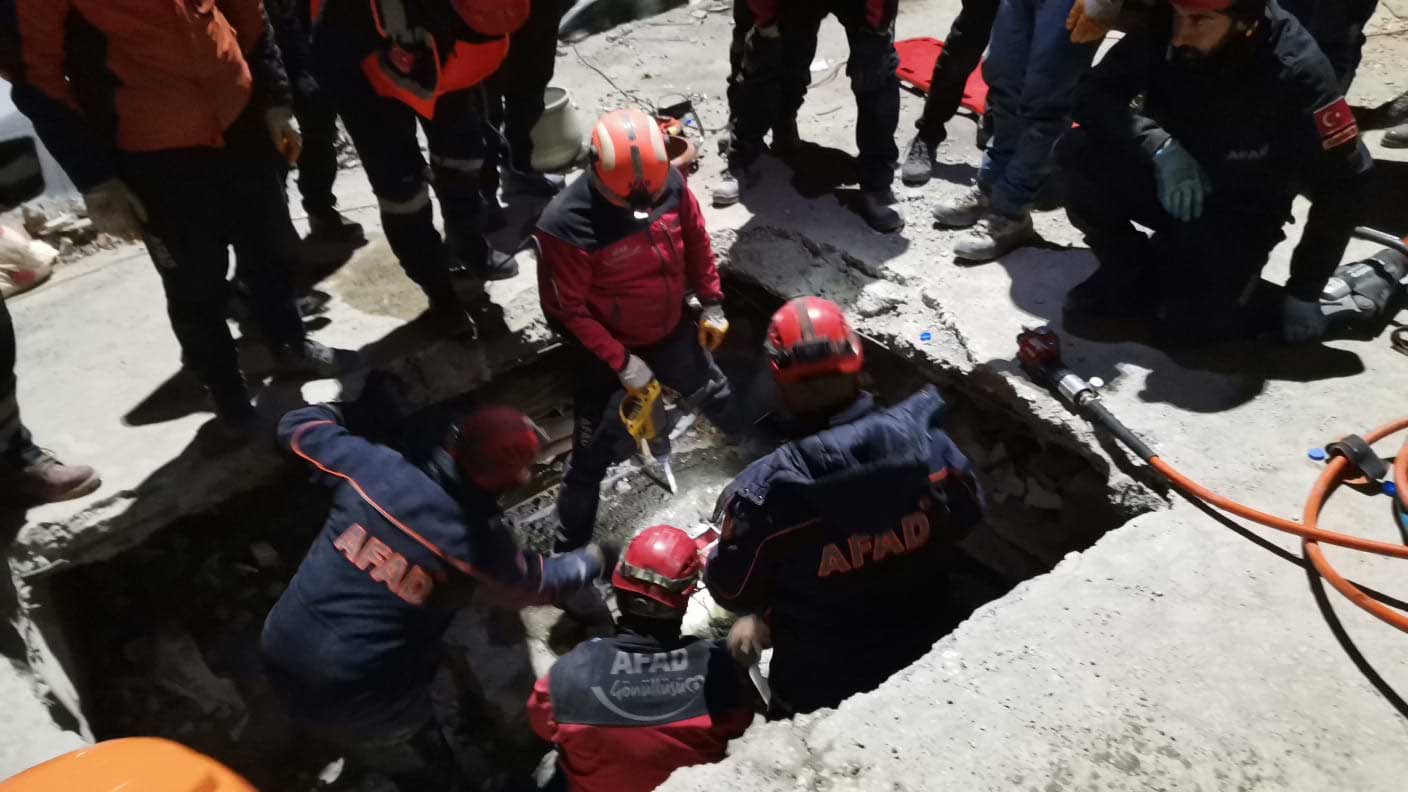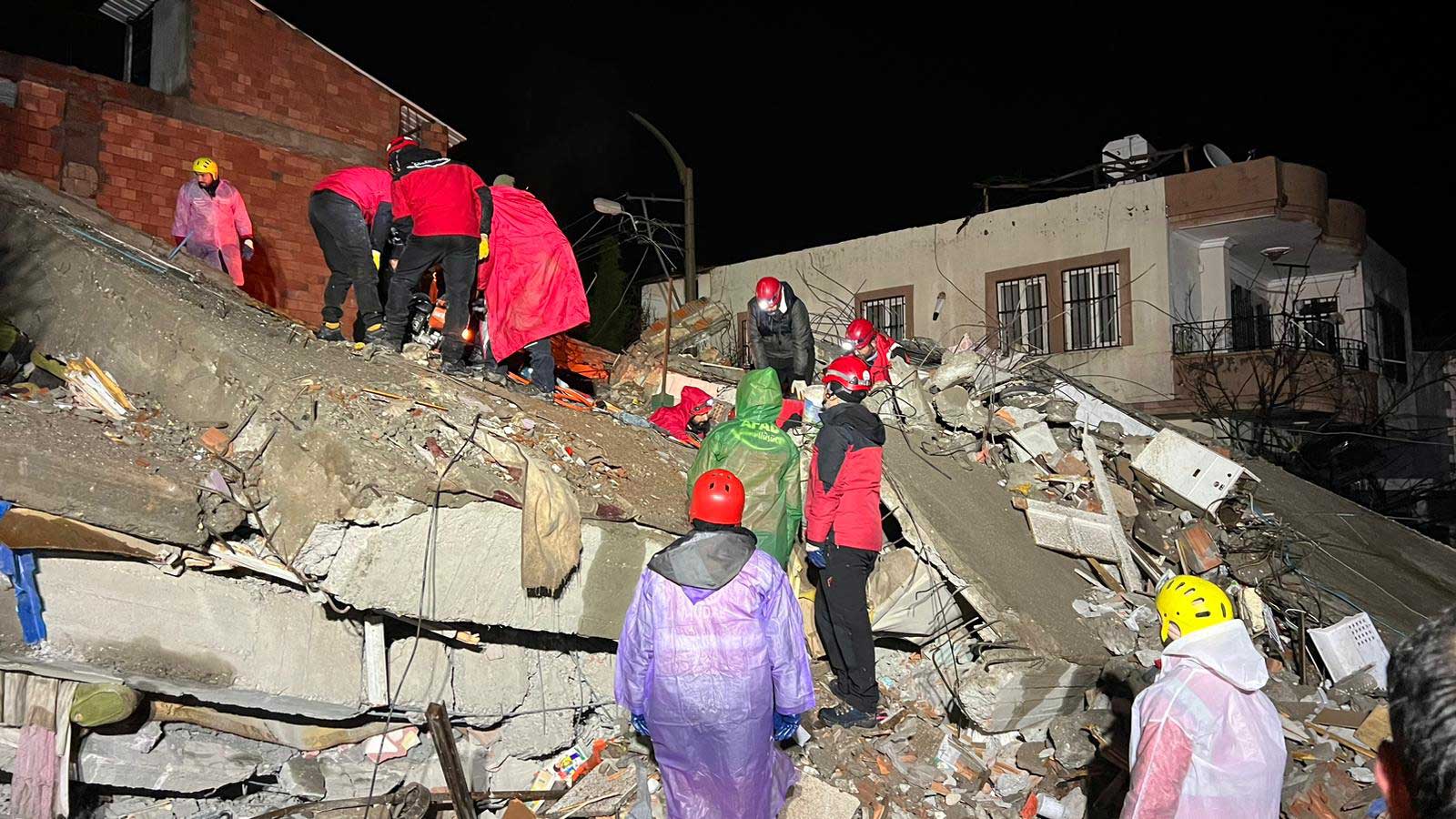DUYGU KIT
As a journalist based in Dersim and a member of the Munzur Search and Rescue Association, Kıt set out for Adıyaman the morning she received news of the earthquake. She described the five-hour drive as marked by anxiety, with cracked roads and dead birds hitting the car windows as they hurried to reach the disaster site. “The extent of the devastation became clearer with every mile,” she recounted.
"The shock of seeing Adıyaman in ruins"
Upon reaching Adıyaman, Kıt was stunned by the city’s destruction. Her team was one of the first search and rescue units on the ground, quickly beginning operations at a collapsed building where survivors’ families were gathered outside. The scene, filled with sounds of survivors and the smell of oranges, left her in a state of shock. “It was one of the hardest moments for me, both as a journalist and a human being,” she said. Kıt struggled to maintain composure as she tried to document the moment while helping in the search.
“Refugees pleading for help”
One of Kıt’s most impactful encounters was with refugees trapped in the rubble, expressing their desperation. “Please help us too,” they pleaded. Kıt noted the added weight of their situation—people who had fled war to rebuild their lives in Turkey, only to feel abandoned. The shame and helplessness on their faces, as they found themselves displaced once again, left a lasting impact on her. “These individuals had already suffered losses in their homeland, and now they were suffering in a new country, feeling like they were unworthy of rescue,” Kıt recalled.
Like other reporters covering the earthquake, Kıt heard faint voices from nearly every building she approached in Adıyaman. Despite severe weather and limited resources, her team at Munzur Search and Rescue worked tirelessly to reach as many people as possible.
"Torn between documentation and rescue"
One of the first areas her team worked in was Sakarya Street, a neighborhood divided between luxury buildings and areas populated by refugees. “It felt like an apocalypse had hit,” Kıt said, recalling her team’s efforts to evacuate two refugees, Zeynep and Osman. She found it difficult to document the scene, aware of how distressing it would be for survivors to witness. "I needed to report, document, and coordinate, but the silence and despair were overwhelming."
The rapid acceptance of their losses by the refugees haunted her. “They were dying here just as they had in their homeland, treated as though their lives didn’t matter. Even if we didn’t feel this way, later footage confirmed their worst fears,” she noted.
"Being a journalist in a crisis is exceptionally challenging"
Working among people of various classes, nationalities, and faiths, Kıt took on different roles—sometimes a rescuer, sometimes a journalist, and sometimes a person simply offering comfort. The intensity of the crisis made documenting events even more difficult. At times, she faced hostility, particularly as a woman; some grieving family members saw her presence at the scene as inappropriate. "Their anger was understandable, even if we worked non-stop. With no phone or network coverage, it was also difficult to send news to those watching anxiously from afar."
As days passed, the number of people at the rescue sites grew, yet hope waned. “No one had hope anymore, but people still waited for their loved ones’ bodies to be recovered,” she recalled. Kıt left Adıyaman on the tenth day, knowing that countless residents, including unregistered refugees, were missing or unaccounted for in the disaster’s aftermath. "If I could, I’d go back to help even more people,” she said, reflecting on the overwhelming sense of helplessness that lingers.
Returning to Adıyaman for earthquake trials, 20 months later
Twenty months after the earthquake, Kıt returned to Adıyaman to attend the first hearing in a trial over the deaths of 83 people in the Üzümkent Apartment Complex. She wanted to support the families seeking justice for their lost loved ones. “Adıyaman no longer feels like a city—just a long street with remnants of destruction,” she observed. One plaintiff’s words summarized the emotional weight: “We are also buried under the rubble, but we’ll only truly clear the debris when justice is served.”





